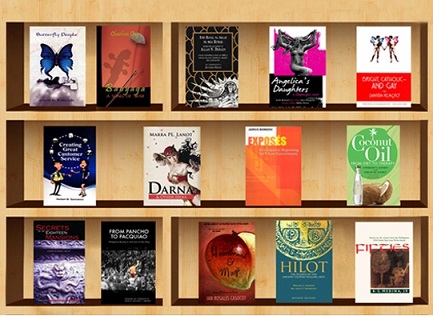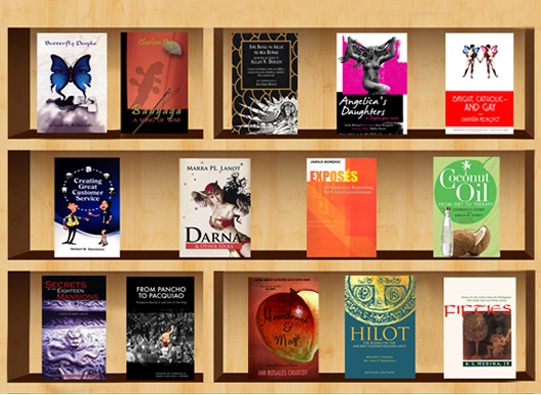By HAZEL P. VILLA

ILOILO City – The Philippines has a big market for books, with 88 percent of Filipino adults reading non-school books. Still, the Philippine book industry continues to lag behind its Asian neighbors and cannot fully serve the needs of the local market, according to the 2014 State of the Book Industry Address (SOBA).
Chair Flor Marie “Neni” Sta. Romana Cruz of the National Book Development Board (NBDB) reported the Philippines produces 6,000 new titles each year—a far cry from Vietnam’s 20,000 new titles a year.
Malaysia produces 10,000 to 13,000 new titles; Indonesia’s and Thailand’s 10,000 new titles each; and Singapore’s 8,000 to 10,000 new titles.
Sta. Romana Cruz delivered the SOBA at the “Booklatansa Bayan,” a regional writing and publishing conference hosted recently by the West Visayas State University in Iloilo City.
Sta Romana Cruz said “With our local books, the genres of fiction, particularly romance, cooking, history, humor, and comics continue to be the most read by Filipinos.”
She also reported that the volume and value of Philippine book production and net sales of books increased in 2012 from 2011, but went back down in 2013.
She observed that despite the drop in the percentage of Filipino adults reading non-school books from the 2003 survey result of 94 percent, the Philippine book industry still cannot meet the needs of the local market.
To fill in the need for books, the Philippines imported US$ 61.493 million worth of books in 2012—a clear indicator, she said, “that we have an enormous market for books and this is something all of us need to seriously consider.”
She observed that readers usually acquired their books by borrowing from others or by receiving books as gifts.
Sta. Romana Cruz revealed that Press and Literature is a significant contributor to the Gross Domestic Product (GDP), citing a recent report on the Creative Industries Roadmap. In 2009, it was shown that the publishing and printing sector contributed P3.02 billion to the GDP.
“The same report also showed that the share or contribution of Press and Literature to total employment within the core copyright-based creative industries is six percent (in 2009),” she added.
“This ranks the book publishing industry third from Software and Databases (at 35 percent) and Motion Picture and Video (at eight percent).”
Sta. Romana Cruz admitted that it was difficult to come out with an accurate picture of the Philippine book industry since some sectors were wary of giving out data.
“What is clear is that we need to validate these figures through the continuous effort of the NBDB to survey the industry first hand from our members,” she said to an audience of about 150 mostly professor-writers, publishers, and some selected students from the Western Visayas region.
Available data show that the country has over 1,000 writers (both of literary and commercial content) and around 50 children’s book illustrators and artists who are active members of a known local organization.
“There are no known figures to date of graphic artists and designers who work in book publishing. We have a mix of editors, either employed by publishers or working as freelancers. But we do know that we need to develop and train more literary editors,” Sta. Romana Cruz, herself a writer and columnist on education topics for a national daily, added.
Other players in the supply chain of the Philippine book industry include 60 printers registered with the NBDB and 800 with the Printing Industries Association of the Philippines.
Based on NBDB interviews, there are 12 known local paper manufacturers and around 50 paper suppliers.
There are also over 1,000 e-books available in the market from the largest local e-book publishers, and 23 Filipino book publishers who are already into developing digital content and e-books for the global market. A survey of the e-book selling market shows there are currently two known online bookstores based in the Philippines that are selling e-books.
The domestic and global trade of books involves around 30 domestic booksellers, 150 book importers, and 250 exporters—all registered with the government and their respective local associations.
Towards the end of her speech, Sta. Romana Cruz emphasized the need for a unified book publishing industry that must answer “the essential question, ‘What is the Filipino book?’.”
